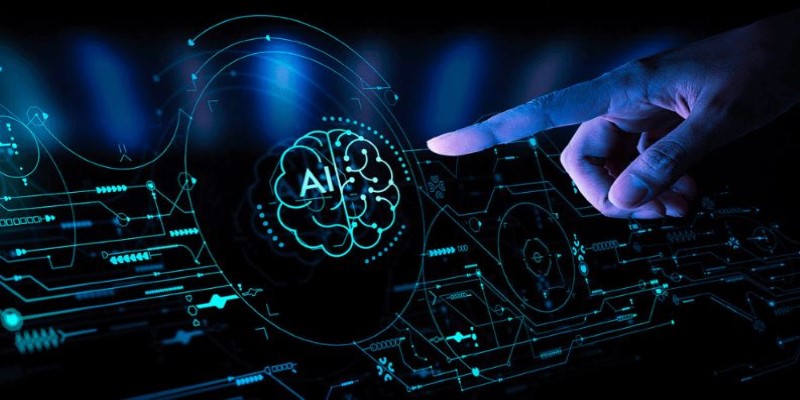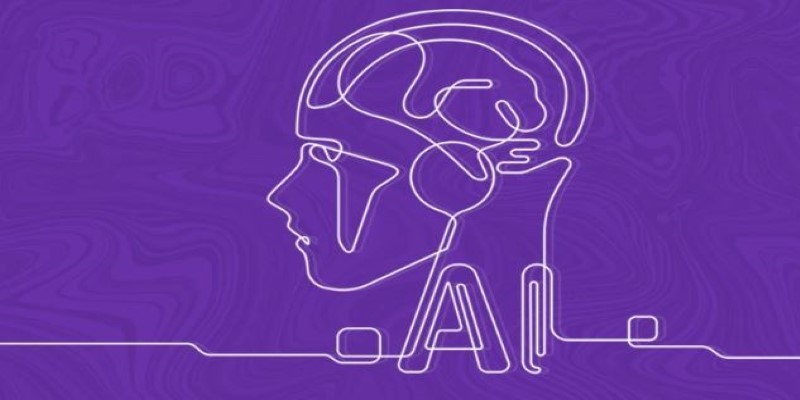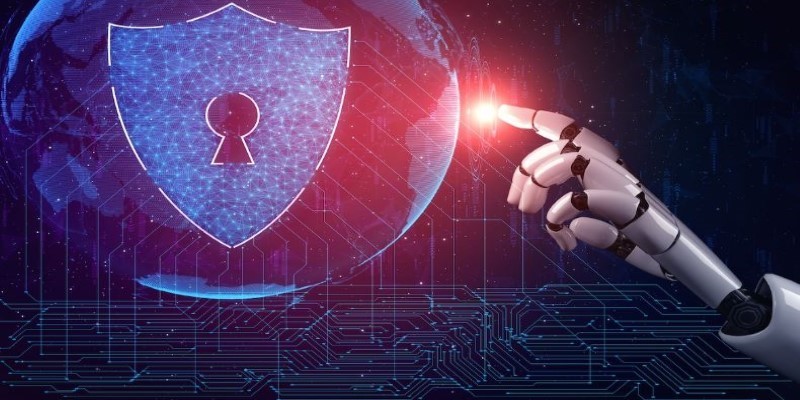The internet has become a vast network of users, devices, and data moving at incredible speed. While this digital growth brings convenience, it also opens the door to increasing cyber threats. Hackers no longer rely on simple tricks; they use advanced techniques to steal information and disrupt systems. Traditional security methods can’t keep up with these fast-evolving threats.
This is where AI in Cybersecurity steps in. It works proactively, learning from past attacks, detecting unusual patterns in real time, and preventing damage before it happens. AI in Cybersecurity empowers human experts with faster, smarter tools to protect against complex and evolving cyber risks.
AI in Cybersecurity transforms threat detection from a slow response game into a real-time defense mechanism. Unlike traditional systems that require manual updates or preset rules, AI adapts and evolves with each new piece of data it processes.
The core of this ability is in machine learning algorithms. The systems are taught to identify typical network behavior. Anything different from this behavior flags something. For instance, if an employee normally logs in from one location but suddenly logs in to sensitive information from another country, the system notices.
Another key strength of AI in Cybersecurity is its ability to analyze enormous volumes of data in real-time. Modern businesses generate a staggering amount of digital activity every second. No human team can manually track and analyze this information efficiently. AI systems do this effortlessly, scanning millions of data points for irregular patterns linked to cyberattacks.
Threat detection systems based on AI are also good at recognizing zero-day attacks—attacks that have never been encountered before. Because these attacks do not have recognized signatures or patterns, these systems do not recognize them. AI can recognize anomalies based on behavior instead of depending on outdated databases.
The use of AI in Cybersecurity isn’t just theoretical. It’s already shaping how businesses, governments, and even individuals protect themselves from threats. Banks and financial institutions use AI-driven systems to monitor transactions for signs of fraud or data breaches. When something unusual happens, the system responds within seconds — faster than any human could.

Large corporations deploy AI tools to protect their internal networks from ransomware or phishing attacks. These systems can automatically block suspicious emails or quarantine infected files before they spread through the network.
AI is also vital to safeguarding cloud environments. As more data is stored in the cloud, new vulnerabilities emerge. AI-driven monitoring tools provide constant surveillance over these systems, ensuring that any unusual access attempt or data breach is detected early.
Even government agencies now rely on AI to defend critical infrastructure like energy grids, transportation systems, and communication networks.
While AI in Cybersecurity brings significant advantages, it also faces some serious challenges. One of the primary concerns is the risk of false positives. AI systems are designed to detect unusual patterns or behaviors within a network. However, not every anomaly is a threat. Sometimes, regular user activity may appear suspicious to the system, triggering unnecessary alerts. This not only wastes time but also puts extra pressure on cybersecurity teams who must investigate these false alarms.
Moreover, cybercriminals are evolving their tactics. They are now using advanced techniques like adversarial machine learning to deceive AI systems. By introducing misleading data into the system, attackers attempt to confuse the AI, causing it to misinterpret threats or allow malicious activity to go unnoticed.
Data privacy is another critical challenge. For AI in Cybersecurity to function effectively, it needs access to vast amounts of user data. This raises concerns about how the data is collected, stored, and used. Companies must handle this data responsibly, ensuring compliance with privacy laws and maintaining transparency with users.
Addressing these challenges requires constant improvement of AI algorithms, human oversight, and strict data governance to ensure that AI continues to strengthen cybersecurity without compromising user trust or privacy.
The future of AI in Cybersecurity holds great potential as technology continues to advance. Researchers are focusing on creating smarter and more adaptive algorithms that can easily distinguish between real threats and harmless activities. With the integration of advanced techniques like deep learning and neural networks, AI systems will become even more accurate in detecting complex and evolving cyber threats.

Another exciting development is the combination of AI with blockchain technology. Blockchain offers a decentralized and secure method of recording data, making it extremely difficult for hackers to tamper with security logs. This integration can strengthen cybersecurity systems, adding an extra layer of protection against data manipulation and breaches.
As cyber threats grow more sophisticated, AI in Cybersecurity is expected to evolve at the same pace. The future role of AI will not be about replacing cybersecurity professionals but supporting them with faster analysis, smarter detection, and real-time responses. AI will act as a constant digital guardian, operating 24/7 without fatigue, helping organizations stay one step ahead of attackers. The key to future cybersecurity success will be a balanced collaboration between human intelligence and AI-driven technology, creating a stronger and more resilient defense system for the digital world.
AI in Cybersecurity has become an essential part of modern digital defense. With the rise of complex and fast-moving cyber threats, traditional methods are no longer enough. AI-driven threat detection provides faster response times, smarter analysis, and better protection for businesses and individuals. While challenges like false alerts and privacy concerns exist, the future of cybersecurity depends on combining human expertise with AI technology. This partnership ensures stronger defenses, helping organizations stay ahead of cybercriminals.

AI Hallucinations happen when AI tools create content that looks accurate but is completely false. Understand why AI generates false information and how to prevent it

Know how computer vision transforms sports with real-time player tracking, performance analysis, and injury prevention techniques

Explore if AI can be an inventor, how copyright laws apply, and what the future holds for AI-generated creations worldwide

Get a clear understanding of supervised learning, including how it works, why labeled data matters, and where it's used in the real world—from healthcare to finance

Open reasoning systems and Cosmos world models have contributed to robotic progress and autonomous system advancement.

Learn the nine biggest benefits of using AI in retail, from personalized experiences to cost savings and smarter decision-making

Discover ChatGPT, what it is, why it has been created, and how to use it for business, education, writing, learning, and more

From 24/7 support to reducing wait times, personalizing experiences, and lowering costs, AI in customer services does wonders

Discover how Microsoft Drasi enables real-time change detection and automation across systems using low-code tools.

Learn AI and machine learning for free in 2025 with these top 10+ courses from leading platforms, universities, and tech experts

Explore IBM Granite-3.0's setup, features, and real-world uses in AI. Learn to deploy it efficiently for enterprise tasks.

AI in Cybersecurity is changing the way businesses handle threat detection. Discover how advanced AI systems prevent cyberattacks with faster and smarter protection